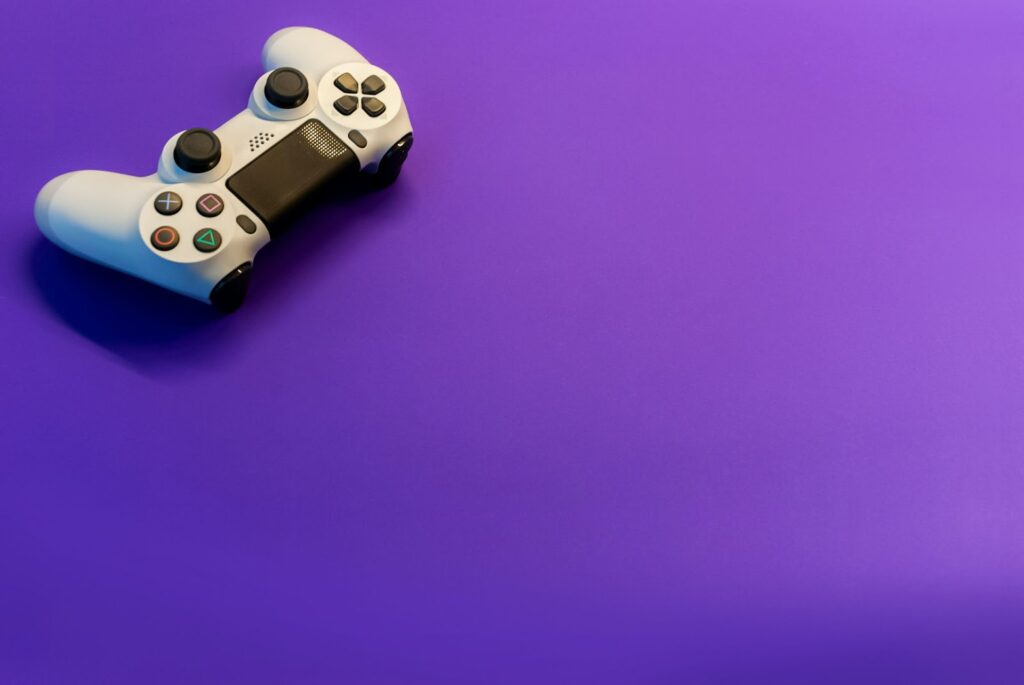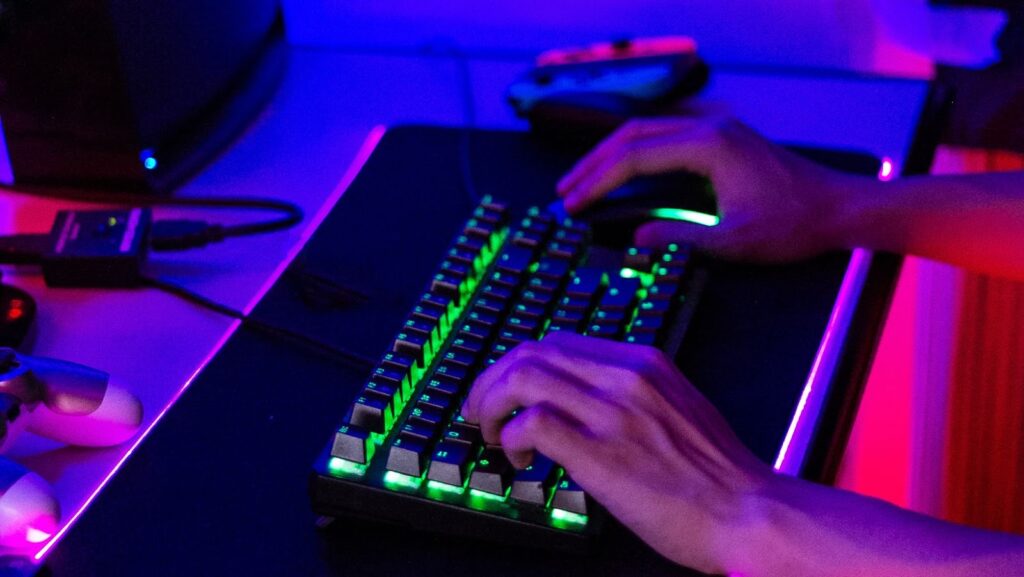The Backbone One and Razer Kishi v2 are two of the most popular smartphone controllers on the market. Here’s how they stack up against each other:
| Design | Compatibility | Controls | Price |
| The Backbone One is a sleek and compact controller that attaches directly to your iPhone. On the other hand, the Razer Kishi v2 has a more traditional gaming controller design with a plastic shell that holds your phone in place. | Both controllers are compatible with iOS and Android devices, but the Backbone One only works with iPhones, while the Razer Kishi v2 is compatible with most smartphones. | The Backbone One has a standard gamepad layout with dual joysticks, a D-pad, and four face buttons. The Razer Kishi v2 has a similar layout but also includes two additional triggers on the back. | The Backbone One is priced at $99, while the Razer Kishi v2 is slightly more expensive at $99.99. |
Conclusion: Both controllers are excellent choices for mobile gamers, but the Backbone One is the better option for iPhone users, while the Razer Kishi v2 offers more compatibility and a slightly better grip.
Backbone One vs Razer Kishi v2
When choosing between the Backbone One and the Razer Kishi v2, it is important to consider the design and build quality of the two controllers. Both controllers have their own unique looks and designs that can appeal to different gamers. The Backbone One has a minimalist look with a glossy black paint finish while the Razer Kishi v2 has a futuristic design with its angular shape and rubberized matte finish.
Let’s compare the design and build quality of these two controllers to see which one is better.
Construction and materials used for Backbone One
Backbone One is constructed from durable and lightweight materials such as polycarbonate, TPU, and aluminum, ensuring both design and build quality to compete with Razer Kishi v2.
The Backbone One features a slim profile and ergonomic design that makes it easy to hold and play for hours. It is constructed with aircraft-grade aluminum, which makes the device lightweight while keeping it durable.
Its buttons and joystick are made from high-quality materials and feature a tactile click response that provides satisfying feedback while playing.
In comparison with the Razer Kishi v2, although both controllers have similar build quality and are constructed using aircraft-grade aluminum, the Backbone One boasts better ergonomic design and superior button and joystick quality.
Overall, the design and build quality of the Backbone One make it an excellent choice for mobile gamers looking for a high-quality and durable controller to take their gaming experience to the next level.
Pro tip: When choosing a gaming controller, consider the design and build quality of the device, as well as the quality of buttons and joystick for a satisfying gaming experience.
Construction and materials used for Razer Kishi v2
The Razer Kishi v2 controller is expertly designed and built with high-quality materials, making it one of the best options on the market compared to the Backbone One.
The controller’s body is crafted from sturdy and durable plastic, providing a comfortable and secure grip while gaming. The buttons and triggers are highly responsive and tactile, delivering a seamless gaming experience.
The controller can accommodate a wide range of smartphones through its adjustable cradle, which securely holds your device in place, allowing you to play without any discomfort.
The Kishi v2 also features pass-through charging and headphone jacks, allowing you to charge your phone and listen to audio while playing.
Overall, the Razer Kishi v2 is a high-quality controller that excels in both its design and build quality, making it a worthy competitor to the Backbone One.
Ergonomics and Comfort
When it comes to mobile gaming accessories, ergonomic design and comfort are crucial factors to consider, especially for those who enjoy prolonged gaming sessions. The Backbone One and Razer Kishi v2 are two premium gaming controllers that present an interesting battle between design and build quality.
The Backbone One boasts a sleek and ergonomic design, featuring a patented collapsible form factor that easily fits in your pocket. This design ensures that your hands won’t cramp after hours of gameplay. Additionally, it’s equipped with clickable thumbsticks, responsive buttons, and triggers for more precise control and immersive gameplay.
On the other hand, the Razer Kishi v2 features a more robust build quality with two universal pass-through charging ports, a textured joystick for precision, and clickable analog thumbsticks. It’s also more versatile, adapting to a wide range of phone dimensions and USB-C port alignment.
Both controllers offer a comfortable and ergonomic gaming experience, but the choice between them ultimately comes down to personal preference in terms of design, features, and compatibility.
Compatibility and Ease of Use
When it comes to the comparison between the Backbone One and the Razer Kishi v2, the first point of comparison is compatibility and ease of use. Both controllers boast compatibility with a wide range of smartphones and their respective operating systems. They also have wireless and wired options and come with extra features to improve gaming comfort.
Let’s take a look at the compatibility and ease of use of each device in more detail.
Compatibility of Backbone One
Backbone One and Razer Kishi V2 are both highly compatible and user-friendly gamepads for mobile gaming.
Backbone One is compatible with all iPhones running iOS 13 or later, while Razer Kishi V2 is compatible with both Android and iOS devices with a USB-C port.
In terms of ease of use, Backbone One offers a non-slip grip and ergonomic design for comfortable gameplay, while Razer Kishi V2 features clickable analog thumbsticks for a more precise gaming experience.
Both gamepads offer low-latency connectivity via a direct lightning or USB-C connection to your mobile device, ensuring smooth and responsive gameplay.
Ultimately, the choice between the Backbone One and Razer Kishi V2 comes down to personal preference and device compatibility.
Compatibility of Razer Kishi v2
The Razer Kishi v2 is a highly compatible and easy-to-use mobile gaming controller that works well with a variety of Android and iOS smartphones, making it a strong contender in the battle of mobile gaming controllers, including the Backbone One.
The Razer Kishi v2 is compatible with most Android (7.0 or later) and iOS (14.0 or later) smartphones that have a USB-C or Lightning port, including Google Pixel, Samsung Galaxy, iPhone, and iPad models. This controller uses a pass-through charging feature that allows you to charge your phone while playing games, so you don’t have to worry about running out of battery.
The Razer Kishi v2 also features clickable thumbsticks, responsive triggers, and a D-pad for precise and immersive gaming. The controller is easy to set up and use, simply connect it to your device’s USB port, and you’re ready to play.
Ease of Use and Setup

When it comes to gaming controllers for mobile phones, the Backbone One and Razer Kishi v2 are two popular options on the market. In terms of ease of use and setup, both controllers have their pros and cons.
The Backbone One offers a straightforward and intuitive setup process. It’s compatible with a wide range of iPhone models and comes with a companion app for easy button remapping and screen recording. The controller also has a built-in Lightning port for charging your phone while you play.
On the other hand, the Razer Kishi v2 offers universal compatibility with both iPhone and Android phones. It has a unique design that allows you to expand and contract the controller to fit your device securely. However, some users may find the setup process to be more cumbersome compared to the Backbone One’s plug-and-play approach.
Ultimately, the choice between the two controllers will depend on your personal preferences and gaming needs.
Gaming Performance and Features
When it comes to gaming performance and features, both the Backbone One and the Razer Kishi v2 appear to be promising contenders. Both controllers offer a variety of features that can be beneficial for gamers, but it can be difficult to decide which one is better for your needs.
We’ll go through the specific differences between the two controllers so that you can make an informed decision.
Input Latency and Response Time of Backbone One
The input latency and response time of the Backbone One controller is one of its key features that sets it apart from its competitors, such as the Razer Kishi v2.
With a lightning-fast response time of 0.3ms, the Backbone One ensures that your moves and actions are registered instantaneously on your iOS device. This is significantly faster than the response time of the Razer Kishi v2, which has a response time of about 8ms.
The input latency of the Backbone One is also incredibly low, thanks to its wired connection to your device. This means that there is virtually no delay between your controller inputs and their corresponding actions on screen. In contrast, the Razer Kishi v2 uses a Bluetooth connection, which can sometimes result in lag and input delay.
Overall, the Backbone One’s impressive input latency and response time make it an ideal choice for mobile gamers who prioritize speed and precision in their gaming experience.
Input Latency and Response Time of Razer Kishi v2
The Razer Kishi v2 offers an impressive input latency and response time, making it a top-performing gaming controller among its competitors like the Backbone One controller.
With a latency of less than 14ms, the Razer Kishi v2 offers highly responsive gameplay, allowing you to execute your moves and control your game with precision.
Additionally, the Razer Kishi v2 features mechanical buttons and D-pad, offering tactile feedback, and a premium gaming experience.
Comparable to the Razer Kishi v2, the Backbone One controller claims to offer low-latency gameplay. However, it has been reported to have some connectivity issues, which can potentially affect its input latency and overall gaming performance.
In conclusion, for gamers looking for a top-performing controller with fast input latency, the Razer Kishi v2 stands out among its competitors like Backbone One.
Additional features offered by Backbone One
Backbone One offers a variety of additional features on top of its top-notch gaming performance and compatibility, which makes it a strong competitor in the battle of Backbone One vs Razer Kishi v2.
Some of the features that make Backbone One stand out are:
| Lightning port | – this means you can charge your phone while gaming, whereas the Razer Kishi v2 doesn’t offer this feature. |
| Ergonomic design | – Backbone One features an ergonomic & comfortable design that fits snugly into your hand, making it easier to use for extended periods. |
| Capture button | – This feature lets you take screenshots or record in-game footage quickly and easily, whereas the Razer Kishi v2 does not have a capture button. |
| Momentary mute button | – this feature lets you quickly mute the game’s audio during gameplay, providing a better gaming experience for users who would like to play without audio. |
Pro tip: Before choosing a gaming controller, it’s important to consider what features are most important to you and compare the options thoroughly.
Battery Life and Charging
When comparing the Backbone One and the Razer Kishi v2 controllers, it’s important to consider battery life and charging. Both controllers require external charging, and come with a USB-C port for power. That said, the Backbone One boasts a longer battery life of 10 hours, while the Razer Kishi v2 only offers up to 8 hours of playtime.
Let’s take a closer look at the differences between the two regarding battery life and charging.
Battery life and Charging of Backbone One
When it comes to battery life and charging, Backbone One has noticeable advantages over its competitor, Razer Kishi v2.
The Backbone One controller offers a battery life of 8-10 hours, while the Razer Kishi only offers 6-8 hours. Additionally, the Backbone One controller only takes 30 minutes to charge fully, while the Razer Kishi takes up to 3 hours to charge.
The charging method is also more convenient on the Backbone One. It offers a USB-C port for charging, which is the same cable used to charge most smartphones. On the other hand, Razer Kishi v2 comes with a charging dock that needs to be prepared beforehand, and the controller needs to be charged in the dock.
Overall, if you’re looking for a controller with a longer battery life and faster charging, the Backbone One is the better option over the Razer Kishi v2.
Battery life and Charging of Razer Kishi v2
The Razer Kishi v2 offers up to 8 hours of battery life on a single charge and takes around 3 hours to fully charge. When compared to the Backbone One, the Kishi v2 seems to have the advantage in battery life.
If you’re looking to extend the battery life of your Kishi v2, here are some pro tips:
| Turn off the Kishi v2 when it’s not in use to conserve battery power. |
| Reduce screen brightness and volume settings on your phone when using the Kishi v2. |
| Use a charger with a high amperage rating to speed up the charging process. |
| Charging your Kishi v2 while using it will cause it to charge slower than when it’s not in use. |
Price and Value for Money
When it comes to value for money, both the Backbone One and Razer Kishi v2 have a lot to offer. While the Backbone One is much more affordable, the Razer Kishi v2 has more features that might justify its higher cost. Let’s dive into the price points and features of these two gaming controllers to see if the Razer Kishi v2 is worth the extra money.
Price and value for money for Backbone One

The Backbone One and Razer Kishi V2 are two of the most popular mobile gaming controllers available in the market. While both offer similar features, there are differences in price and value for money.
The Backbone One is priced at $99.99 and comes with additional features such as a pass-through charging port, a 3.5mm headphone jack, and customizable buttons. These features make it convenient for gamers to play for extended periods without worrying about battery drainage. The controller supports a wide range of games and is compatible with iPhones and iPads.
On the other hand, the Razer Kishi V2 is priced at $79.99 and offers a more compact design. However, it lacks a headphone jack and pass-through charging port, which means that gamers need to unplug the controller to charge their phone. The Kishi V2 is also compatible with a smaller range of games and is exclusively designed for Android devices.
Overall, while the Razer Kishi V2 is more affordable and portable, the Backbone One offers more features and versatility for gamers. It offers better value for money as it allows gamers to play for extended periods while keeping their devices charged and offers compatibility with many games and devices.
Price and value for money for Razer Kishi v2
When it comes to comparing the price and value for money of the Backbone One and the Razer Kishi v2 controllers, there are a few things to consider.
| Backbone One | Razer Kishi v2 |
| Slightly cheaper | More sturdy and higher quality build |
| Compatible with iOS devices | More adaptable for a wider range of mobile devices |
| Provides clickable joysticks, D-pad, and action buttons |
Therefore, whether price or value for money is more important depends on your personal needs and preferences. If you want a controller that’s compatible with a wider range of devices or has a more durable construction, then the Razer Kishi v2 might be worth the extra money. However, if you’re looking for a cheaper option that provides great functionality for iOS devices, the Backbone One could be the right choice.
In conclusion, both controllers have their unique features and benefits, and the decision to choose one comes down to the user’s gaming and compatibility preferences.
Comparison of pricing and final verdict
The Backbone One and the Razer Kishi v2 are two popular mobile gaming controllers in the market. While the Razer Kishi v2 is priced higher than the Backbone One, it generally offers better value for money due to its feature set.
The Razer Kishi v2 has better compatibility with a wider range of smartphones due to its adjustable design. It also features clickable analog sticks and a d-pad for a better gaming experience.
On the other hand, the Backbone One is more compact and easier to carry around. It also includes a capture button to record in-game footage and has a zero latency connection for smoother gameplay.
In terms of pricing, the Backbone One is more affordable than the Razer Kishi v2. However, considering the superior features and compatibility of the Razer Kishi v2, it provides better overall value for gamers.
Ultimately, the choice between the two will depend on individual needs and preferences. While the Backbone One is a good option for those on a budget, the Razer Kishi v2 certainly delivers more bang for the buck.


